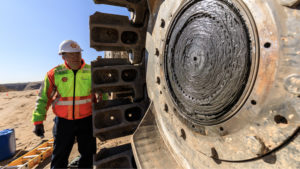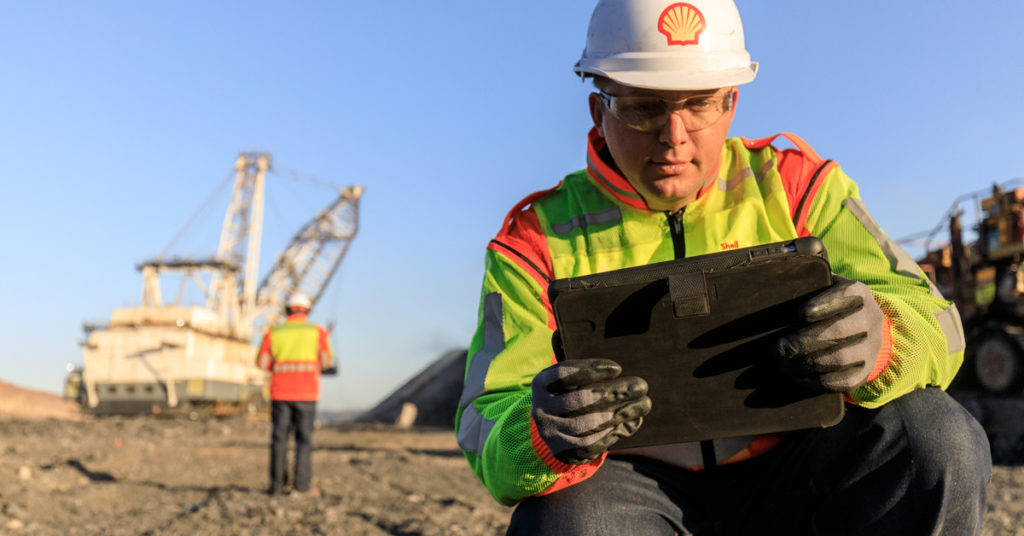Shell today announced it will offer customers carbon neutral lubricants across a range of products for passenger cars, heavy duty diesel engines and industrial applications including mining. Shell aims to offset the annual emissions of more than 200 million litres of advanced synthetic lubricants, expecting to compensate around 700,000 t of carbon dioxide equivalent (CO2e) emissions per year, which is equivalent to taking approximately 340,000 cars off the road for one year.
“Shell has set a target to become a net-zero emissions energy business by 2050, in step with society and our customers,” said Carlos Maurer, Executive Vice President, Global Commercial at Shell. “We know our customers are looking for ways to reduce their net carbon footprint, and as the world’s leading lubricants supplier we have an important role to play. That is why I am pleased to announce the largest carbon neutral programme in the lubricants industry, and one that compensates for the full lifecycle emissions of our products. From today, our consumers, commercial drivers and industrial customers can now enjoy the benefits of improved engine performance and better fuel efficiency in a carbon neutral way.”
This represents a key milestone in Shell Lubricants’ multi-year strategy to help customers manage their sustainability needs and its ambition to reduce the carbon intensity of its products by avoiding, reducing, and offsetting emissions. Since 2016, Shell has reduced the carbon intensity of its lubricants manufacturing by over 30%, and over 50% of electricity used in its lubricant blending plants now comes from renewable sources. Shell is also reducing packaging waste from lubricants products at scale by increasing the use of recycled materials and exploring more sustainable packaging solutions across its supply chains.

While measures to avoid and reduce emissions offer the best way to tackle emissions in the long term, until scalable solutions are deployed, carbon offsetting programmes provide an immediate solution to balance CO2e emissions across Shell’s portfolio and value chain. Shell’s global portfolio of nature-based carbon credits will compensate CO2e emissions from the entire lifecycle of these products, including the raw materials, packaging, production, distribution, customer use and product end of life.
From today, Shell’s carbon neutral lubricants will be available in key markets across Europe, Asia-Pacific, the Middle East and North America. Shell will offset the emissions from a mix of advanced synthetic lubricants in these markets, including Helix and Pennzoil for passenger cars; Rimula and Rotella for heavy duty diesel engines, and a wide range of premium industry lubricants, including Shell Omala in the wind sector, Shell’s range of eco-Label products “Shell Naturelle”, and the Shell Gadus greases product range.
IM Editorial Director caught up with Carlos Maurer for more detail on the ideas behind the move plus some specifics on what it means for the mining sector
What has driven this move from a mining customer standpoint?
In our global commercial business we serve over a million customers around the world every day in a number of sectors and most of them, including the mining companies, are looking for sustainability solutions to reduce their net carbon footprint. We want to make sure that products we are delivering today to the mining sector deliver on these goals but continue to also deliver industry leading performance and efficiency for the lowest TCO. When Shell and IBM launched the Oren B2B marketplace platform for mining in 2020 there was a specific study that included interviews with over 300 mining company executives – 80% of them were already prioritising sustainability in parallel with increasing efficiencies and reducing TCO.

Carlos Maurer, Executive Vice President, Global Commercial at Shell
Can you give some more in-depth insight into how you are achieving carbon neutrality?
Shell has for some time been looking at the CO2 intensity of its products – the two biggest priorities have been and continue to be how can we avoid and how can we reduce emissions. In the avoid category is a lot of circular economy thinking such as reuse and recycling of lubricant packaging, using larger format packaging for mines to avoid waste, using more synthetic base oil in products. In South American mining lubricant supply, for example, Shell has made a big effort to introduce recyclable totes which now accounts for a large part of the supply chain. Reduce covers everything we do around lower the CO2 intensity of manufacturing the products – 50% our lubricant blending plants around the world already use renewable sources of energy. Solar panels have been installed at numerous facilities. We also did a complete reset of all our energy monitoring & management systems to locate any leaks and ways to increase efficiency. Plus of course we worked with our supply chain partners to reduce transportation carbon footprint.

What about the switch of mobile mining equipment to battery electric and fuel cell operation from current diesel use. Will that not mean a significant fall in mining lubricant demand?
In the past few years we have put a lot of effort in working with our OEM partners on the performance fluids that are needed in electric vehicles. This culminated in the launch of our E-Fluids and E-Greases – to support battery electric (BEV) as well as fuel cell electric (FCEV) powertrains for commercial light, medium and heavy goods vehicles. Shell already works with truck and bus manufacturers to co-engineer bespoke fluids that meet the specific needs of their different electric drivetrains for their commercial vehicle models. So while mining is at an earlier stage on this journey, we are well placed for this transition. In an electric mining truck you will still need to lubricate the powertrain and transmission; plus the batteries themselves are immersed in dielectric coolant fluids to manage the heat that is generated. Because of the properties of the products we use to manufacture the current liquids that go into internal combustion engines, we can produce similar fluids but which are specialised for electric vehicle applications. And of course it will be a gradual pathway with different routes and in the medium term a lot of benefits are still to be gained from the use of cleaner diesel, higher Tier engines in non-regulated markets and approaches like trolley assist.











